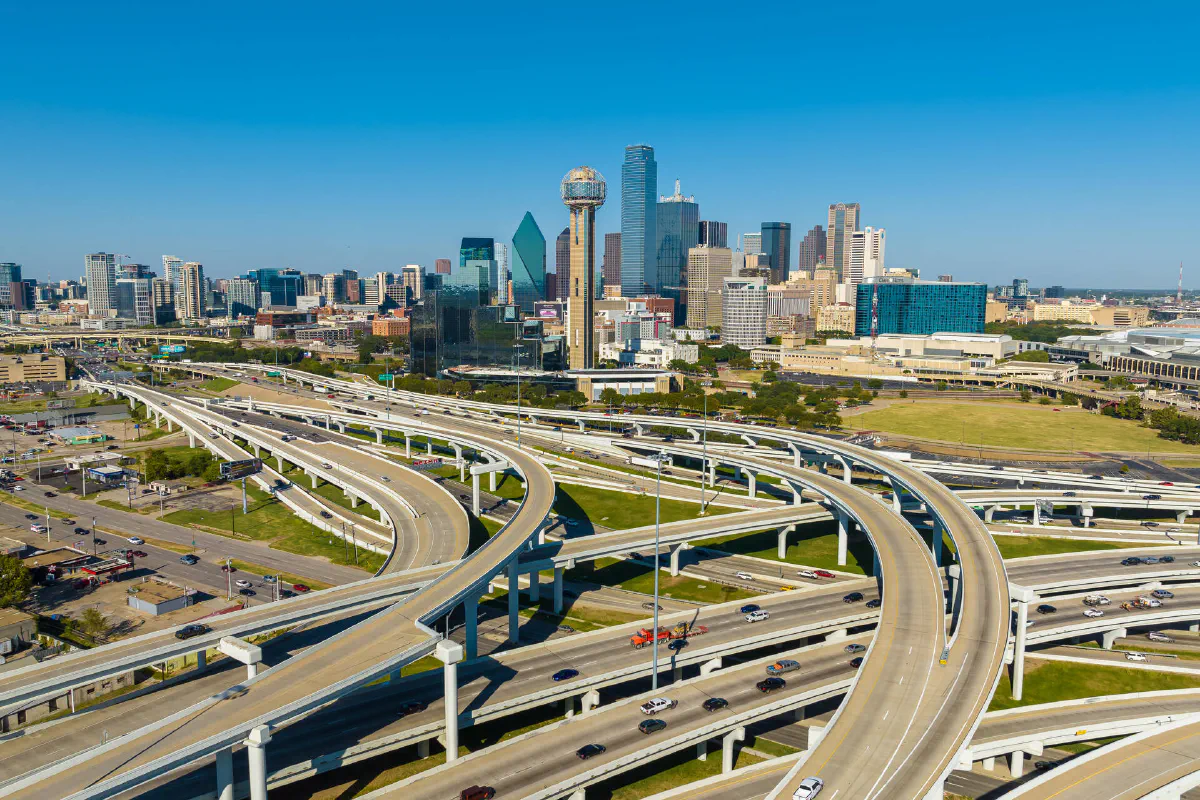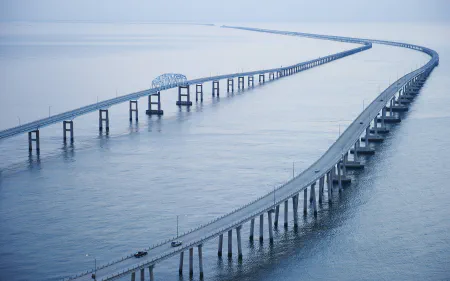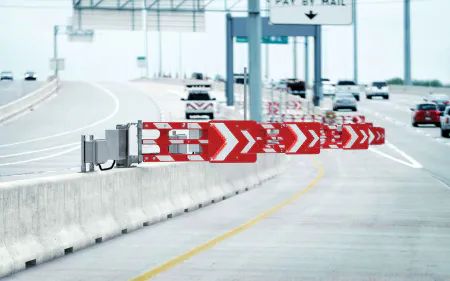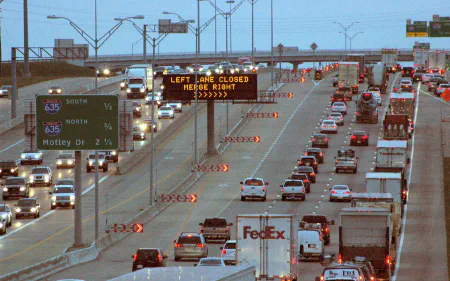Overview
Serving various Dallas suburbs, the Interstate 35E corridor in Dallas and Denton counties is among the most congested roadways in Texas. In 2012, the Texas Department of Transportation (TxDOT) awarded a major project to rebuild the corridor and introduce managed lanes with dynamic pricing to maintain a continuous traffic flow and ensure a minimum speed of 50 mph. The primary goal of this project was to alleviate congestion and enhance traffic flow. The first phase of the project opened in May 2017 and included the addition of a general-purpose lane in each direction and two reversible managed lanes.
Project Scope
The Interstate 35 two reversible lanes, or the I-35E TEXpress Lanes, stretch from Swisher Road in Corinth and I-635 in Dallas with concurrent lanes through the I-635/I-35E interchange. Covering a distance of 18 miles, the I-35E TEXpress Lanes features 15 entrance and exit points. The new configuration of I-35E allows motorists to decide if they want to use either the toll-free main lanes or the TEXpress Lanes, located between the general-purpose lanes.
TxDOT decided to implement nearly 200 automated barricade gates (ABGs), or warning gates, to control the reversible lanes access points, or slip ramps. Reversible slip ramps are equipped with horizontal swing gates tapered on each side of a vehicle arresting barrier (VAB). Versilis gates are deployed to alert drivers not to enter the slip ramp when the traffic pattern is in the opposite direction. In the event of a vehicle driving through the ABGs, it will be stopped by the VAB. While the crashworthiness of Versilis gates was the key selling point to TxDOT, the product’s narrow footprint was also crucial.




